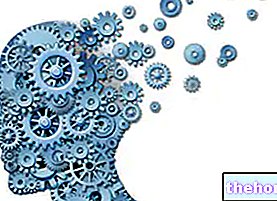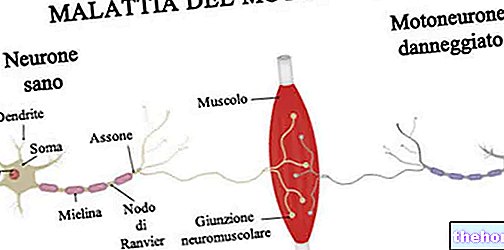Ataxia: definition
From the Greek ataxiā (disorder, uncoordination), ataxia is the cardinal symptom of ataxic syndromes, characterized by the progressive and inevitable loss of muscle control, associated with a difficulty in performing voluntary movements: ataxia expresses the final product of a series of genetic disorders or secondary lesions affecting the central nervous system. It should be remembered that, in ataxic syndromes, poor muscle coordination occurs in the absence of paralysis.
This article is dedicated to the classification of the various forms of ataxia, while in the next the triggering causes and the complete symptomatological picture will be treated.
Classification
There are many forms of ataxia, classified according to the anatomical region affected, the triggering cause, the "age of onset" and characteristics.
General classification of ataxia
First of all, it is necessary to draw up a first general classification: ataxia can affect both the trunk and the limbs, and the gait. In the first case, the ataxia of the limbs is diagnosed by focusing only on the patient's posture, through the evaluation of the individual limbs: in such situations, the patient is unable to maintain an erect position despite maintaining a static position. Ataxic walking, on the other hand, appears only during movement [from Neurology of Netter, by Karl E. Misulis, Thomas C. Head]
Another useful criterion for classifying the forms of ataxia is "weakness, as well as the reduction of muscle strength, a possible cause of ataxia:" weakness, responsible for the lack of motor regulation, can only affect the proximal muscles or be a cause of cerebellar ataxia and cause, together with the loss of kinesthetic sensation (ability to control the movement of a body segment), walking deficits.
Anatomical classification of ataxia
Based on the site affected, ataxias can be classified into four broad groups:
- Cerebellar ataxia: often associated with tumors, inflammatory and vascular lesions in the cerebellum;
- Cerebral ataxia: the cortex of the temporal, parietal or frontal site is involved;
- Ataxialabyrinthine: the inner ear is affected;
- Sensory ataxia: neoplasms associated with inflammatory processes characterize this ataxic form
[taken from wikipedia.org]
Hereditary and secondary ataxias
In addition, ataxic syndromes can be inherited or secondary, resulting in brain injuries such as trauma, viral infections, drug or alcohol abuse, and repeated exposure to radiation.
Hereditary ataxic forms include:
- Friedreich's ataxia (very common), characterized by bone changes involving mainly hands and feet, associated with progressive deterioration of the nervous system.
- Spino-cerebellar ataxias (widespread forms): classified in turn in many other forms, depending on the triggering cause. Generally, the spino-cerebellar are characterized by dizziness, tremor, lack of balance, areflexia (lack of reflexes).
- Telangiectatic ataxia (Louis-Bar syndrome), characterized by immunodeficiency, telangiectasia of the eye and skin, and cerebellar ataxia
- Cerebellar atrophy, a neuro-vegetative pathology, usually generated by neoplasms, degenerative, toxic or vascular diseases
- Charcot-Marie ataxia (or hereditary sensory motor neuropathy) affects the peripheral nervous system
- Sensory ataxia (not to be confused with cerebellar): due to lesions at the level of the dorsal columns or peripheral polyneuropathies [taken from Neurology of Netter, by Karl E. Misulis, Thomas C. Head]
Classification based on "age of onset"
Considering the "age of onset" of the disease, some types of ataxia are distinguished:
- Actasia-teleagectasia and hypoxic-ischemic syndrome (usually occurring within two years of the child's age)
- Autosomal-dominant cerebellar ataxia, Friedreich's ataxia (between 2 and 5 years of age)
- Spino-cerebellar ataxia, typical of adolescents
These ataxic syndromes are caused by a number of factors, such as: metabolic diseases, neuroblastoma, infections, intoxications, trauma, severe migraines, multiple sclerosis, Hodgkin's lymphoma and hereditary diseases.
Classification based on the cause
A "further classification of ataxias is based on the triggering causes; in this regard, the following are distinguished:
- Ataxia due to neoplastic and preneoplastic causes
- Ataxia from degenerative and neurodegenerative causes
- Infection ataxia
- Ataxia generated by metabolic deficits
- Pharmacological intoxication ataxia
Other articles on "Ataxia: classification"
- Ataxia
- Ataxia: Symptoms and Causes
- Ataxia: diagnosis and therapy
- Ataxia: Symptoms and Causes
- Cerebellar ataxia
- Charcot-Marie Tooth ataxia
- Ataxia in Brief: A Summary of Ataxia





.jpg)






















